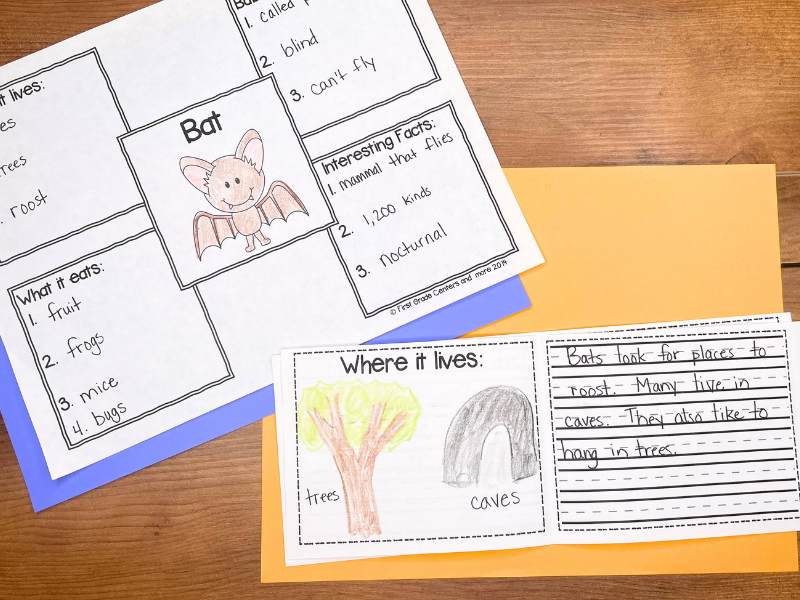
Spring is the perfect time to teach animal report writing! By this time of the year, students are reading and writing a bit more independently and are ready for a challenge. Writing an animal report is perfect for their first experience with how to do research. Today, I’m sharing some big ideas we want students to learn about conducting research and some mini lessons to teach in your primary classroom.
Whether you are researching animals, or another topic, there are some key concepts we want students to learn. These will help build a solid foundation for report writing in older grades.
I am a HUGE believer in modeling! As a primary teacher, you are constantly teaching new content and processes that your students have never experienced before. Modeling the steps along the way is SO important for your emergent readers!
I always liked to have my own animal to research and write about. Webs make the perfect way for students to research and take notes. Each day, I would teach a minilesson and model completing one section of the web. When it is time to write the report, we would write about one section of the web each day and add our matching illustrations. This project would typically take us about 2-3 weeks of our writing block.
Are you looking for more writing tips? Check out this post for tips for teaching first grade writing.

We want our students to be able to find their information quickly! Often, primary students will just begin reading the entire book. Use these mini lessons to help them learn to find information quickly.
Mini Lesson: How to use the Table of Contents to find specific information quickly.
Show the students a book with a table of contents about your animal. Give students the term “Table of Contents” and how it can quickly help us find information. Read through the table of contents. Ask questions such as, “Which section should I go to to learn about what my animal eats?” Then go to that section, and record information on your web.
Mini Lesson: Using illustrations and their captions to learn new information.
Many of our emergent readers are not going to be able to fluently read all of a text yet. This is a great strategy to help them see how they can quickly find information.

Learning to write in our own words and not copying too much is a tricky skill- but SO important for our students to learn! With some good modeling and structure, we can lay a good foundation for this skill.
Mini Lesson: Write only the important words on your web- don’t write the whole sentence.
Model for students how to only write 1-3 words per piece of information found. This will help them when they are writing to put the information into their own words and not copy from their information sources.
Mini Lesson: Webs completed first- then writing on another day.

Step one of the animal report writing process is completing their webs. Don’t hand out the writing pages, until student webs are complete. Talk with students about the “why”. Teach them we want to take our notes first, then give our minds a break before we begin writing.
Mini Lesson: Webs only when writing- books put away!
Now that webs are completed, it is time to begin the writing process! Students are going to use their notes to begin writing sentences about their animals. If your students are ready for it, teach them how to write topic sentences to begin their writing. Talk about how we have finished our research, now the books we used should be completely put away. If you checked out books from the library, return them before they begin writing.

Mini Lesson (Advanced): Keep a list of books/websites you have read and used for your animal report writing.
It’s important to teach kids from a young age about citing sources. While primary students are not ready to fully understand this process, they can understand keeping a list of the resources you used for your research. You can download this free bibliography page for your students to use to keep track of their research.

If this task is too tedious for your young learners, consider having them take photographs of the books they used and uploading them to a digital document.
If you love the idea of teaching your students to write animal reports. I have a set of ready to use webs and mini books to help! It includes materials for 44 different animals! You can also edit the web categories and report headings to customize the project to your students’ needs.